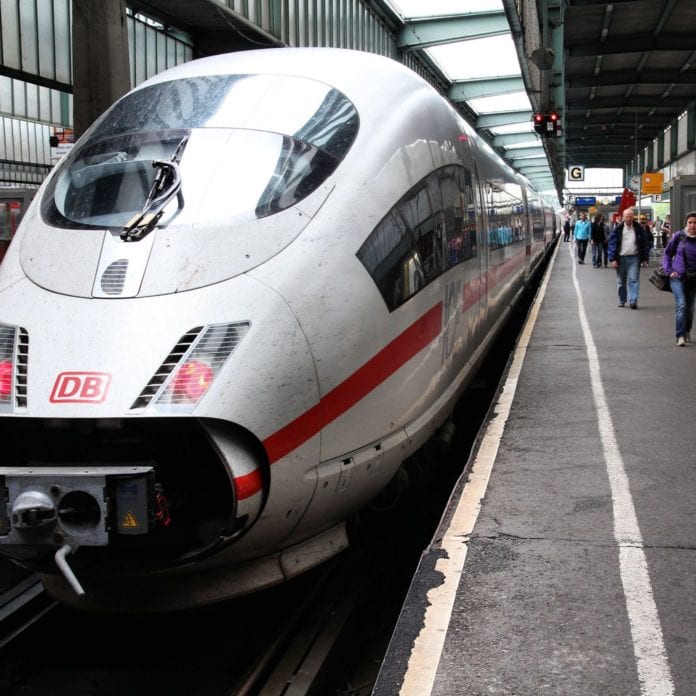Leading train producer uses big data
Train operators are expected to never be late, having acute service and availability targets to meet. To fulfill those requirements, an efficient maintenance program is important, and data-enabled functionality is a must, according to Siemens.
Reactive maintenance, as well as routine maintenance like visual inspections and scheduled exchange of components, are no longer enough. According to a case study provided by Teradata, Siemens is moving toward a more cost-effective, condition-based and predictive maintenance model.
The condition of components is measured using transfer and remote monitoring of diagnostic sensor data; data which is also used to analyze patterns and trends. This helps predict when a component is likely to fail, so it can be repaired before anything unexpected happens.
To ensure the commercial sustainability of this approach, Siemens uses and reuses existing data, creating what it calls the “Internet of Trains.” The company analyzes sensor data in near real-time, which means the German company can react very quickly, ensuring that customer transport services aren’t interrupted.
Predicting failures
Spanish train operator Renfe uses Siemens’ high-speed Velaro E train, key components of which are continually monitored by Siemens. A train developing abnormal patterns is dispatched for an inspection service to prevent failure on the track. This has resulted in only one of 2,300 journeys being noticeably delayed, and only by five minutes. If a delay is over 15 minutes all passengers are reimbursed fully.

In the U.K., Siemens conducted a pilot project with a large European train operator on one of its regional routes. The project analyzed a relatively small data set of 1 million sensor-log readings, taken in five-minute intervals over the course of a year. Analysts measured variables such as component temperature and pressure from 300 different sensors. This data was overlaid with many thousands of corresponding reports of failures and fixes. The team then combined data sources, defined the most relevant engine problems and divided the data into appropriate sections.
They then used the Teradata Aster Discovery platform’s analytic tools to evaluate the combined data from different perspectives. It highlighted variables that helped to predict engine problems and identify failed elements that triggered the malfunction of other components. Siemens then applied the Aster nPath function to categorize the different sensors attributing normal, high and low values, and tracking changes. Those changes revealed which sensor pattern was likely to result in engine failure. For example, Siemens found that when the engine temperature dropped from mid to low then rose to mid value again, an engine failed three days later.
“Our customers get more mileage from fewer trains and, therefore, use their assets better while reducing their costs,” said Gerhard Kress, director of mobility data services at Siemens. “Additionally, data analytics can speed up the root-cause analysis, reducing labor time.”
According to the Teradata case study, predictive modelling improves both top and bottom line:
- Increased up-time through significant reduction of unplanned downtime.
- Extension/flexibility of maintenance intervals because we understand the risk.
- Reduced labor costs: quicker root-cause analysis, improved first-time-fix rate, etc.
- More mileage/fewer cars, improved utilization of assets.
- Enhanced planability, with streamlined supply chain management.
- Maintenance can be performed at the least-costly location.
- Provide up-time guarantees, performance-based contracting.
- Increased service contract capture rate; recurring revenues – higher percentage of total service revenue.
- Service as key differentiator.
IoT as a service

“It is all about increasing up-time and avoiding unplanned downtime. If we predict incidents early enough we, and our customers, can react accordingly,” Kress said. “Our customers get more mileage from fewer trains. Predictive maintenance enables them to use their assets better while at the same time reducing costs. Additionally, data analytics can speed up root-cause analyses, reducing labor time.”
Siemens expects predictive maintenance to evolve into next-generation maintenance, and a whole new business model.
“We are able to provide completely new services with up-time guarantees, risk-sharing models and performance-based contracts for mobility systems,” Kress said.
Service will be a key aspect of the “internet of things,” with customers buying the operation of the vehicle rather than the vehicle itself, according to Siemens. For example:
- Rhein Ruhr Express: Delivered an almost 100-strong regional train fleet, plus 32 years of full maintenance at a fixed price, with performance penalties.
- Thameslink: Performance-based maintenance contract requiring nearly-run-time analysis of diagnosis and process data.
- Metro Riad: availability targets (40 seconds arrival/departure per train) can only be reached with data-enabled services.
- ICx: high-performance KPIs form part of the delivery contract.
Siemens focusing on digitalization
The digitization of products and services plays a major part in the work of all nine divisions of the German train producer.
“Digitalization is one of our focus areas,” Kress said. “We realize that a digital twin to our physical goods is extremely important to give better value to our customers.”
On the data front, Siemens Corporate Technology deploys its own version of the Teradata Unified Data Architecture including a Data Warehouse, an Aster Discovery Platform and an appliance for Hadoop. Depending on the analytical project, Siemens is able to combine and analyze different types of data on whichever is the most suitable platform.

